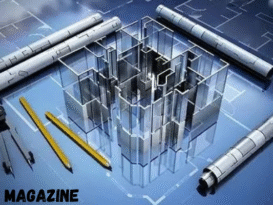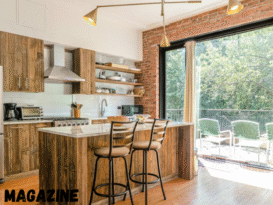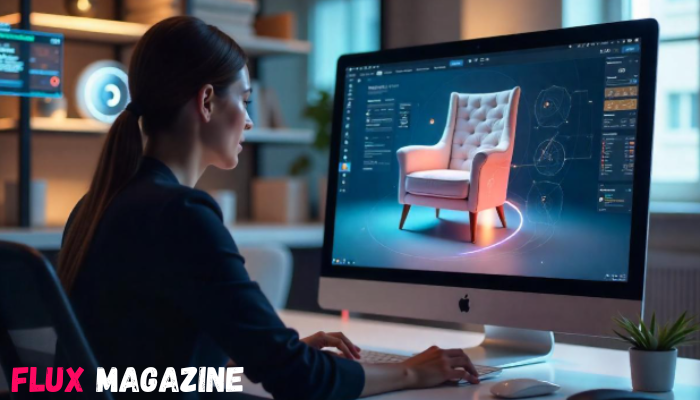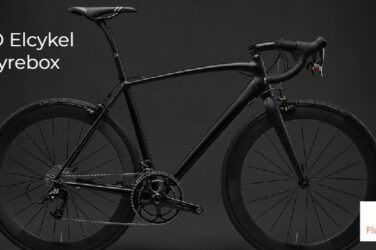In the past decade, online shopping has evolved from static catalogs and flat images to immersive, interactive experiences that nearly replicate walking through a store. The driving force behind this transformation is 3D product visualization technology, a convergence of design, AI, and real-time rendering that allows customers to experience products from every angle before making a purchase. For brands exploring this technology, understanding the capabilities and cylindo pricing can be a strategic advantage, as the return on investment often comes in the form of higher conversion rates, fewer returns, and stronger brand engagement.
The Rise of Visual Commerce
The eCommerce world thrives on confidence. When customers can’t touch, feel, or try a product, visuals become their primary decision-making cue. Studies consistently show that shoppers who can interact with 3D models or visualize products in augmented reality (AR) are far more likely to complete a purchase.
This has made 3D visualization platforms an essential part of digital strategy, not just a marketing add-on. Retailers from furniture to fashion are now using 3D and AR to provide a tactile digital experience that bridges the gap between imagination and reality.
What Exactly Is 3D Product Visualization?
At its core, 3D product visualization converts traditional product images into dynamic, photorealistic 3D models. These models can be rotated, zoomed, customized, and even placed within virtual environments. The result is a deeply interactive product experience that increases buyer trust.
Unlike conventional photography, 3D visualization allows a single digital asset to generate thousands of variations, different colors, finishes, or configurations, without additional photoshoots. For manufacturers and retailers managing large catalogs, this not only cuts costs but also accelerates time to market.
Cylindo: Precision Meets Scalability
Among the leaders in this space, Cylindo has established itself as a go-to solution for furniture and home goods brands. The platform offers photorealistic 3D product renders, 360° viewers, and augmented reality experiences that integrate seamlessly with eCommerce websites.
What sets Cylindo apart is its scalability. Retailers can upload product data once and generate thousands of high-resolution renders automatically, streamlining content creation and ensuring consistency across digital channels. Cylindo’s strength lies in precision, textures, lighting, and materials are rendered with near-photographic realism.
And while businesses often ask about Cylindo pricing, the conversation usually pivots from cost to value. When brands report double-digit increases in conversion rates and a measurable reduction in product returns, the investment in 3D visualization often pays for itself. In a market where visuals sell products, that ROI can be game-changing.
Zolak: Contextual Visualization with a Creative Twist
Where Cylindo focuses on product-level perfection, Zolak brings a new dimension, context. Its platform enables immersive 3D room planners and virtual showrooms, allowing shoppers to place items within lifelike environments.
Zolak also leans heavily into AI-powered scene generation, producing realistic room backdrops that match a brand’s aesthetic or a customer’s space. For example, a shopper can instantly visualize how a new sofa might look in a modern loft or a cozy cottage, complete with lighting and décor that adapts in real time.
This approach elevates the visualization experience from product inspection to storytelling. Instead of viewing a chair in isolation, the user sees it as part of a lifestyle, an emotional connection that drives decision-making.
Beyond Furniture: Expanding Horizons
While the furniture and home décor sectors have been early adopters, 3D product visualization is spreading rapidly across industries. Fashion brands use it to display garments in motion. Automotive companies employ 3D configurators to showcase vehicle interiors and trims. Even consumer electronics are embracing interactive visuals to demonstrate functionality and scale.
The underlying technologies, real-time rendering engines, WebGL, and AR frameworks, are becoming faster and more accessible. Cloud-based pipelines now allow high-quality visualization without specialized hardware, meaning even mid-sized retailers can compete with enterprise-level digital experiences.
The Business Impact of Visualization
The numbers are telling. Retailers using 3D visualization consistently report:
- 25–50% higher engagement times on product pages
- 20–30% lower return rates, especially for configurable products
- Up to 40% higher conversion rates, driven by increased buyer confidence
Beyond direct sales, the data generated from customer interactions, like which configurations or colors are viewed most, helps inform product design and inventory decisions.
Also Read: How to Transform Any Team of People into a Competitive Advantage
Challenges and the Road Ahead
Despite its benefits, 3D visualization still faces hurdles. Creating accurate models requires detailed product data, and smaller brands may struggle with the initial setup. However, as automation and AI continue to advance, asset creation is becoming faster and more affordable. Platforms like Cylindo and Zolak are already incorporating AI-driven material recognition and automated model optimization to simplify the process.
Looking ahead, generative AI could redefine how we approach visualization altogether. Imagine a shopper describing their dream living room, and the system instantly generating a personalized, shoppable 3D scene. That’s not far off, and it’s where platforms like these are heading.
Conclusion: Seeing Is Believing
In a world where visual communication defines digital success, 3D product visualization platforms have become the new frontier of online retail. Cylindo demonstrates the precision and reliability needed for scalable eCommerce, while Zolak pushes the boundaries of immersive, contextual storytelling. As the technology matures, the question for businesses is no longer whether to adopt 3D visualization, it’s how quickly they can integrate it. Because in the next wave of digital commerce, the brands that help customers truly “see” their products will be the ones customers remember.


















Show Comments (0)